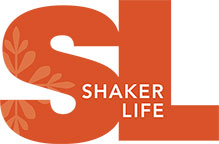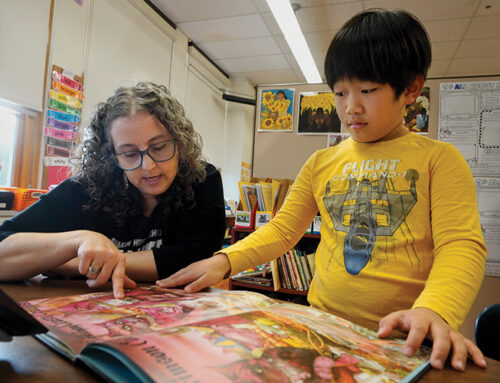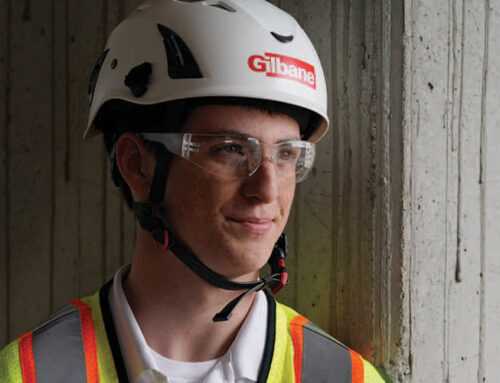Shaker’s elementary school students are all in on food waste composting: It stinks and it’s gross, but it’s fun.
By Joe Miller
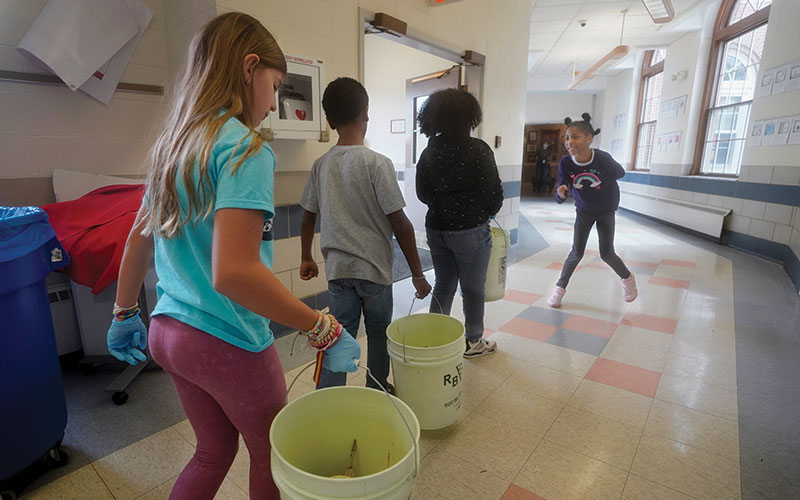
Photos by Gus Chan
“It just feels good to help the world,” says nine-year-old Anjali Lathia during Fernway’s third-grade lunch period. Other nine-year-olds at her table excitedly agree. “It doesn’t go into landfills and that’s awesome,” says Aurelia Pohl. “We’re saving the world and we won’t have to move to Mars or something,” adds Greta Susick with a laugh.
When leftovers end up in landfills, the rotting food produces methane, a harmful greenhouse gas. When that same waste is properly composted, it “vastly reduces” methane emissions and can lower a school’s carbon footprint, says Zoe Apisdorf, Rust Belt Riders’ director of residential experience.
The Shaker Heights City School District sees the potential. By next school year the District’s remaining three elementary schools – Lomond, Boulevard, and Mercer – will be added to the Rust Belt Riders pickup route. Additionally, AVI Food Service, the District’s meal provider, is looking to use Rust Belt Riders to recycle its kitchen waste.
We’re helping the planet and we’re helping our school.
The District is considering funding options for a broader program, says Chief Operating Officer Jeffrey Grosse. “We really want to move forward with sustainability and we’re looking at all ways to be proactive,” he says.
Fernway’s third graders got the ball rolling two years ago when they studied sustainability as part of the International Baccalaureate unit called Sharing the Planet. After learning about the benefits of composting, the kids began pushing for a building- wide plan and asked Fernway’s Parent Teacher Organization to help fund services from Rust Belt Riders. The company charges $30 a week per bin for commercial pickup services.
In the beginning, the third graders promoted composting around the school with posters that detailed what could and couldn’t go into the buckets. They also took charge of collecting and emptying the buckets during the first full year. Although the school custodian has since taken over bucket duty, the kids – kindergarten through fourth grade – are still active participants during cleanup time.
“This really was born of the students,” says third-grade teacher Megan Konopinski as her students clear off their lunch tables. “The kids are used to it now. They’ve been doing it for two years and it’s just very natural for them.”
Over the two years, Fernway has diverted about 6,300 pounds of food waste from garbage dumps, according to Rust Belt Riders.
“It’s allowing the kids to see that their actions can make a difference in their school, their community, and their environment. That’s pretty powerful,” says Fernway Principal Chris Hayward.
Onaway School took a slightly different path to composting. Prompted by a parent’s interest, art teacher Tim Kalan approached Rust Belt Riders and found funding through a Shaker Schools Foundation grant. For labor, he discovered that the fourth graders and the lunch aides were ready and eager to pitch in.
“The stars all aligned,” says Kalan. “It’s a model that can work.”
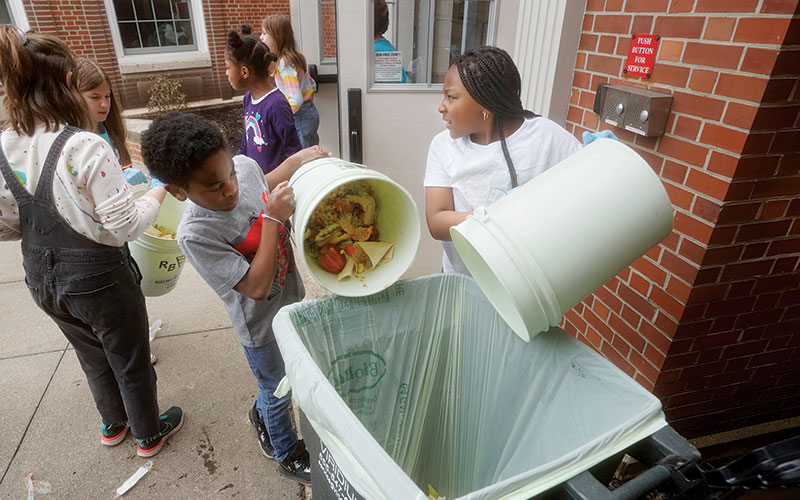
When lunch is over, a team of fourth graders takes the green buckets outside and picks out anything that can’t be composted. They then empty the buckets, rinse them out with water and bring them back inside. The year-long effort so far has resulted in almost 3,200 pounds of scraps diverted to the Rust Belt Rider composting facility.
“It stinks and it’s gross, but it’s fun,” says fourth-grader Iris Linder after the daily collection.
“It really does stink,” co-worker Alex Potts agrees. “But we’re helping the planet and we’re helping our school,” she adds.
With Mercer and Boulevard schools planning to add Rust Belt Riders next school year, the District is considering paying for composting at those buildings as well as Fernway and Onaway, according to Grosse. “We’re definitely open to that conversation,” he says.
AVI Food Service is also considering reviving a partnership with Rust Belt Riders to recycle “pre-consumer waste” from the main kitchen at Shaker Heights High School. Mark Jacobs, AVI’s onsite food service director, says the brief program started in 2019 and “worked really well” until it was disrupted by the pandemic.
“Hopefully by next year we’ll be able to reintroduce it back at the High School,” Jacobs says.
Separate from the other elementaries, Lomond School will benefit from a new pilot partnership between Rust Belt Riders and the City of Shaker Heights (see @shakeronline for more details). Funded by a $16,000 grant from the Cuyahoga County Solid Waste District, the pilot creates a Rust Belt Rider community drop-off site at Lomond School. Although similar to other local Rust Belt Rider sites at the Nature Center at Shaker Lakes and The Dealership, the new site will be available free only to the Lomond neighborhood, potentially reaching 1,700 households.
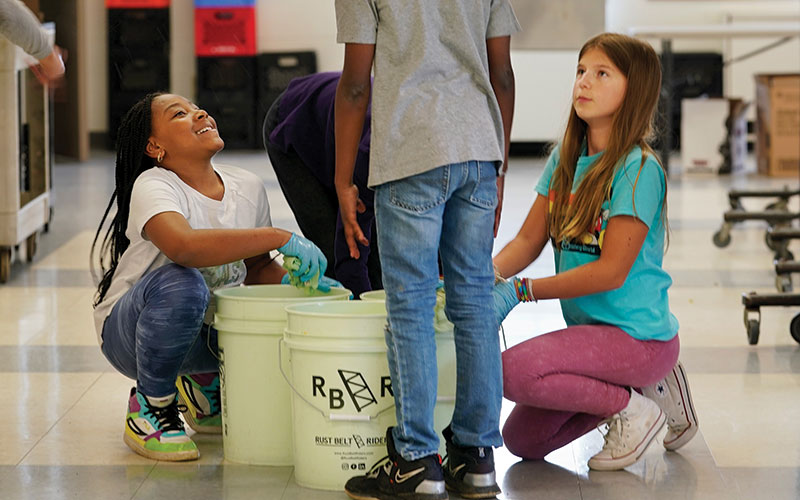
The company plans to have the site open this summer and hopes to learn how removing cost as a barrier impacts accessibility and the amount of waste collected. Rust Belt Riders charges customers $10 a month to use its other drop-off sites and $30 a month for home pickup.
Neighborhood customers will be able to sign up for the service through the City’s website. For hosting the site, Lomond will be able to recycle lunch scraps for free.
“The kids will do it during the school year and ideally will continue this practice at home during the summer,” Apisdorf says. “Families will be able to keep up the practice of food scrap diversion at home and the kids will be that much better prepared to come back and make sure the school is lowering its carbon footprint and waste output.”
“The best practice is to have the students as involved as possible,” she says.
